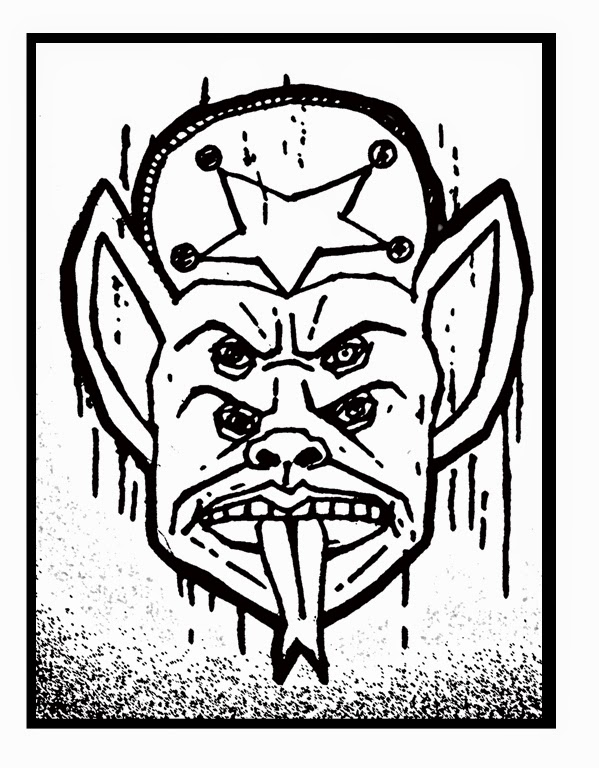Ancient cuneiform tablets speak of "Baelzepeth" a lower demon said to be able to be conjured from the depths of hell to serve those who would call him. He is represented in ancient art as being chained either at the ankle, wrist, or in some cases, with a collar locked around his neck. This represents Baelzepeth's inability to act independently when called.
 |
| Baelzepeth depicted on an Ancient Babylonian tablet. |
Although, historically, there has been no account of Baelzepeth being summoned purposefully, it was accepted amongst the Babylonians that only a necromancer could bring forth or send back Baelzepeth from the underworld.
Through the Babylonian influence on Ancient Hebrew mythology, Baelzepeth became "Baal" and "Zebub" two demonic brothers that were feared amongst the tribes. There has been speculation amongst scholars whether or not, Baal was the demon that had been released by God to kill the first born of Egypt since Heavenly beings would not participate in cold-blooded killing. Technically Baal is the word for "Lord" and could be extended to both Earthly and un-Earthly beings. However, those who fled Egypt after the plagues whispered in shadows of Baalzebub who had been sent by God to reign down terror upon their captors. Baal-zebub translated means "Lord of the Flies" and it was not by chance that flies, locusts, and other forms of pestilence had been part of the Hebrew liberation.
By the time of the Crusades, Baalzebub was feared equally amongst the Muslims and the Hebrews. As Templar Knights returned to Europe during the Crusades they related exaggerated tales of Baalzebub or "Beelzebub" as it was misinterpreted.
 |
| After Montgomery, 1957 |
When the Black Plague broke out during the High to Late Middle Ages, some attributed it to the influence of Beelzebub, brought to Europe through the spoils of the Holy War. Strengthening the argument for conquest over the dark forces, Beelzebub became accepted as another name for Lucifer (who's name ironically means "bringer of light"). The traditional Babylonian visage with its frightening teeth and pointed ears then had horns added for greater effect.
As centuries past, Beelzebub became associated not just with Satan, but with Satan as followed and served by witches and warlocks especially in Celtic traditions. It does not take a huge leap of logic to understand how Beelzebub crossed the Atlantic Ocean in the minds of pilgrims to set foot in the New World.
Women and men who possessed the sign of the upside-down pentagram were said to be "touched" by Beezlebub whose fingerprints revealed the sign of the five-sided star and as history revealed, these people were destroyed as witches. Although many were innocent, a few genuine "Beelzebub worshipers" have been documented and according to surviving records, their descendents live amongst us today.

No comments:
Post a Comment